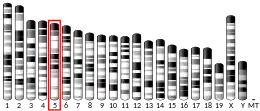| BRAT1 | |||||||||||||||||||||||||||||||||||||||||||||||||||
|---|---|---|---|---|---|---|---|---|---|---|---|---|---|---|---|---|---|---|---|---|---|---|---|---|---|---|---|---|---|---|---|---|---|---|---|---|---|---|---|---|---|---|---|---|---|---|---|---|---|---|---|
| |||||||||||||||||||||||||||||||||||||||||||||||||||
| Identifiers | |||||||||||||||||||||||||||||||||||||||||||||||||||
| Aliases | BRAT1, BAAT1, C7orf27, RMFSL, BRCA1 associated ATM activator 1, NEDCAS | ||||||||||||||||||||||||||||||||||||||||||||||||||
| External IDs | OMIM: 614506 MGI: 1891679 HomoloGene: 16776 GeneCards: BRAT1 | ||||||||||||||||||||||||||||||||||||||||||||||||||
| |||||||||||||||||||||||||||||||||||||||||||||||||||
| |||||||||||||||||||||||||||||||||||||||||||||||||||
| |||||||||||||||||||||||||||||||||||||||||||||||||||
| |||||||||||||||||||||||||||||||||||||||||||||||||||
| |||||||||||||||||||||||||||||||||||||||||||||||||||
| Wikidata | |||||||||||||||||||||||||||||||||||||||||||||||||||
| |||||||||||||||||||||||||||||||||||||||||||||||||||
BRCA1-associated ATM activator 1 is a protein in humans that is encoded by the BRAT1 gene.[5]
Function
The protein encoded by this ubiquitously expressed gene interacts with the tumor suppressing BRCA1 (breast cancer 1) protein and the ATM (ataxia telangiectasia mutated) protein. ATM is thought to be a master controller of cell cycle checkpoint signalling pathways that are required for cellular responses to DNA damage such as double-strand breaks that are induced by ionizing radiation and complexes with BRCA1 in the multi-protein complex BASC (BRAC1-associated genome surveillance complex). The protein encoded by this gene is thought to play a role in the DNA damage pathway regulated by BRCA1 and ATM.[5]
References
- 1 2 3 GRCh38: Ensembl release 89: ENSG00000106009 - Ensembl, May 2017
- 1 2 3 GRCm38: Ensembl release 89: ENSMUSG00000000148 - Ensembl, May 2017
- ↑ "Human PubMed Reference:". National Center for Biotechnology Information, U.S. National Library of Medicine.
- ↑ "Mouse PubMed Reference:". National Center for Biotechnology Information, U.S. National Library of Medicine.
- 1 2 "Entrez Gene: BRCA1-associated ATM activator 1".
External links
- Human BRAT1 genome location and BRAT1 gene details page in the UCSC Genome Browser.
- PDBe-KB provides an overview of all the structure information available in the PDB for Human BRCA1-associated ATM activator
This article is issued from Wikipedia. The text is licensed under Creative Commons - Attribution - Sharealike. Additional terms may apply for the media files.



